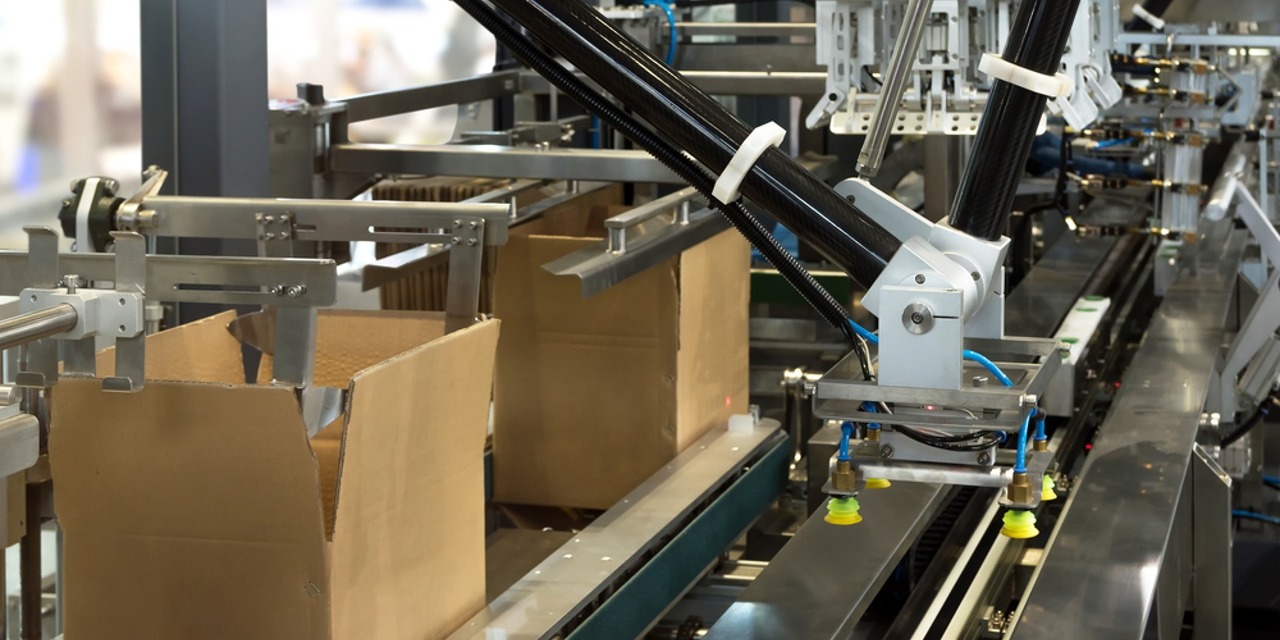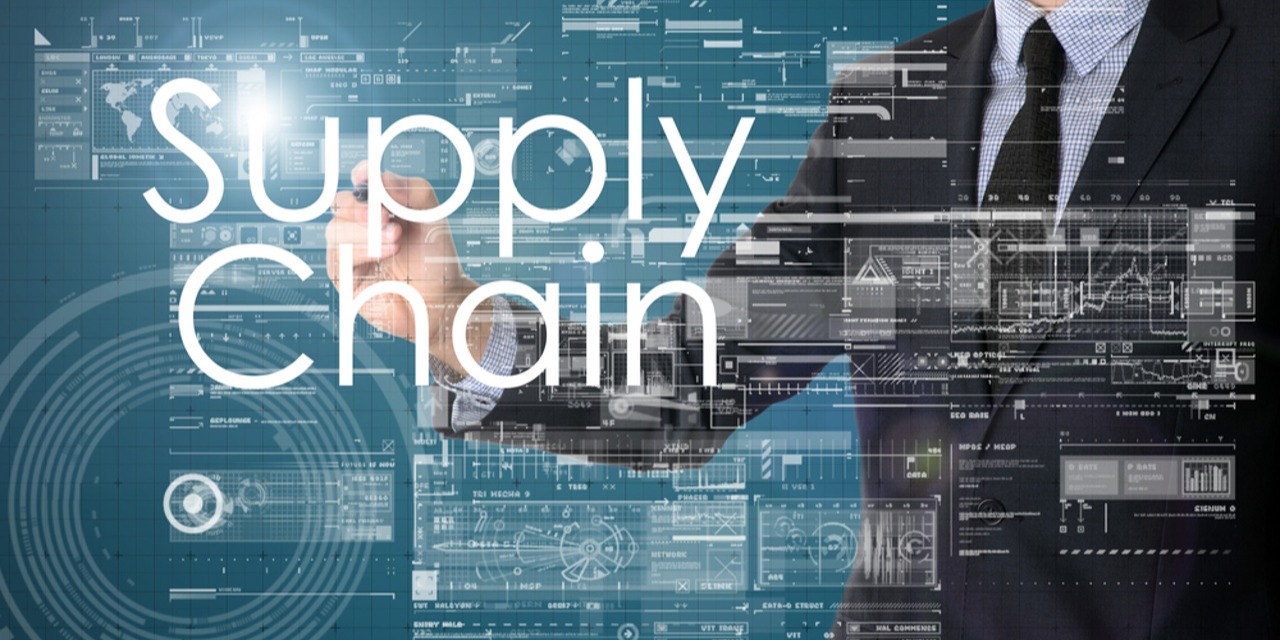Every supply chain is made up of a set of actors and logistical elements. All play a vital role, for it’s enough for a single link to fail for the whole chain to be impacted. Your supply chain is therefore a complex and fragile system that must be optimized at all costs, not only to make it more efficient, but also to ensure its stability.
What is a supply chain?
Supply chain: a definition
The notion of “supply chain” encompasses all the actors, resources, activities and technologies brought into play between the reception of raw materials and the delivery of the end product to the end customer. It applies not only to flows of goods, but flows of information too.
Supply chain issues
Good supply chain management is essential. Good supply chain management allows you to:
- Reduce costs ;
- Increase productivity: faster order picking, optimized storage to speed up employee tasks
- Increase your company's sales;
- Improve follow-up: not only of products at each stage of the supply chain, but also better quality monitoring;
- Reduce lead times for restocking;
- Improve inventory and stock management ;
- Improve responsiveness in the event of incidents or stockout: restocking must avoid shortages and allow for rapid replenishment of stocks when needed;
- Increase customer satisfaction: efficient workflow control results in greater satisfaction, because you hold enough stock to meet demand and deliver on time.
All these elements determine the financial condition of the company, and also its prospects in terms of expansion and sustainability. That’s why supply chain management is so important.
It’s also essential that you continuously improve your logistics processes to maintain the same quality of service and remain competitive.
How to optimize your supply chain
All kinds of logjams and additional costs can emerge in the organization of your supply chain.

Most can be traced to the following factors:
- Departments that are too compartmentalized and do not cooperate with each other enough. This is often a lack of communication between the different departments of a company, which hampers productivity and responsiveness.
- Lack of cooperation between the different suppliers and customers on the Supply Chain. Each goes about its own business, without any real shared vision or effective communication.
All it takes is for a problem to occur in one link of the chain to cause a domino effect that impacts all actors, without the possibility of rapid reaction.
This can lead to e.g. slowdown in the movement of goods when enterprises need to restock quickly to cover a shortage of stocks.
- Lack of efficiency in the various information systems, often due to the absence or poor performance of supply chain management software.
It’s essential to install ERP (Enterprise Resource Planning) software and a WMS (Warehouse Management System).
What all the above problems have in common is lack of coordination and information, and the consequences are the same: degradation of performance and the inability to respond to problems.
As we’ll see later in this article, process automation is a key factor in supply chain optimization.
But we can’t neglect the human factor, either: dialogue with the different actors on the supply chain is important, and so is the sharing of information.
Real-time supply chain planning
Taking historic data into account when planning your supply chain processes may seem like a good idea, but it does make you less responsive to incidents.
The solution for more responsiveness is to opt for real-time planning: when disruptions are detected, the supply chain management software automatically deals with them.
Depending on the situation and the type of supply chain, the appropriate steps are immediately taken to avoid a slowdown in production.
The advantages are numerous:
- You gain in responsiveness: avoiding slowdowns or even shutdowns of production.
- You benefit from better communication with suppliers and customers: they are aware of the problem and can react more quickly.

In which domains can technology improve processes (automation)?
Technology is a precious asset for your supply chain. It enables optimization (automation) in many link of the chain. Here too, the advantages are numerous:
- Enhanced real-time tracking through IT
- Cost reductions;
- Improved productivity;
- Time savings, etc.
Taking the time to audit your entire supply chain will allow you to define which processes can be automated.
This audit will give you a complete picture of the strengths and weaknesses of your supply chain, so you’ll know what to improve to optimize your performance.
Which processes are too time-consuming? Which jobs need more training for higher efficiency? Which steps can be eliminated?
Automation also helps you to manage your business better. For example, goods flows can be tracked in real time thanks to improved track and trace.
Automation also makes information flow more freely, for all tools are monitored by management software.
As soon as your automation solution is in place, you’re gaining in efficiency. But that's not all: the technology also allows you to keep a closer eye on your supply chain.
That helps you focus your efforts in the endeavour for ever-higher performance. And your results keeps improving.
While automation entails significant installation costs, it’s a valuable investment that allows you to increase your sales in the medium and long terms.
A better managed supply chain will be able to process more and more orders under better conditions.
There can be other benefits too, especially for supply chain employees. By automating your processes, your employees are spared the need to perform tiring, repetitive tasks or tasks that could have a negative impact on their health. The result: improved employee health and well-being.
Cultivating good ties with the different players in your supply chain
The smooth operation of your supply chain largely depends on the suppliers and providers you work with. That requires clear communication and rapid resolution of each incident.
Again, technology can solve many problems here, especially management software. Information and its rapid transmission are crucial for enabling everyone to adapt as quickly as possible in the event of a problem.
Better communication between the different actors also allows everyone to work better, and thus be more productive.
Thanks to management software, information is available in real time, and providers do not waste time calling or sending e-mails to get information in case of delays or problems.
The different departments of your enterprise are better coordinated, and the effects are felt all along the supply chain.

Employee training
Employees are the heart of your supply chain. Automation accelerates logistics flows and improves employee working conditions. Human beings remain critical to the smooth operation of your supply chain.
Good training is necessary for good supply chain management. This training should address several requirements:
- Appropriating solutions: employees need to know the tools they work with every day. If these tools are poorly used, they lose their effectiveness. Employees need to know not only how to use them correctly, but also what to do in case of malfunction.
- Compliance with the guidelines is also crucial: not only in the use of tools, but more generally. Employees need to know safety guidelines, the right procedures for protecting their health (e.g. posture) etc.
- Empowering employees to build their skills: for example, by creating supervisory posts for improved management of your teams/organization.
Employees need to feel involved in these changes in order to commit to them.
It’s essential to ask them to voice their requirements, and also their misgivings.
For example, if a new tool is installed but employees do not use it, or use it very little, when it should facilitate their work, we have to understand the reasons for this resistance.
The tool may not meet a real need or may not be fit for purpose, something which should have been highlighted in advance.
Employees may fail to grasp the value of the tool. It may also be too complicated to use. It’s up to you to communicate with your teams on a regular basis to engage, empower and motivate them to accept the changes introduced.
--
Optimizing your supply chain makes you more productive and efficient, which has a direct impact on your sales.
The first step is to analyse your existing system and identify points for improvement. Improved supply chain management requires substantial work: it’s as much about leveraging the potential of new technologies as it's about communicating better with your teams, suppliers and customers.
Each link in the chain must be analysed and re-thought. There are many levers to work, but the rewards are quick to show.




Laisser nous votre commentaire